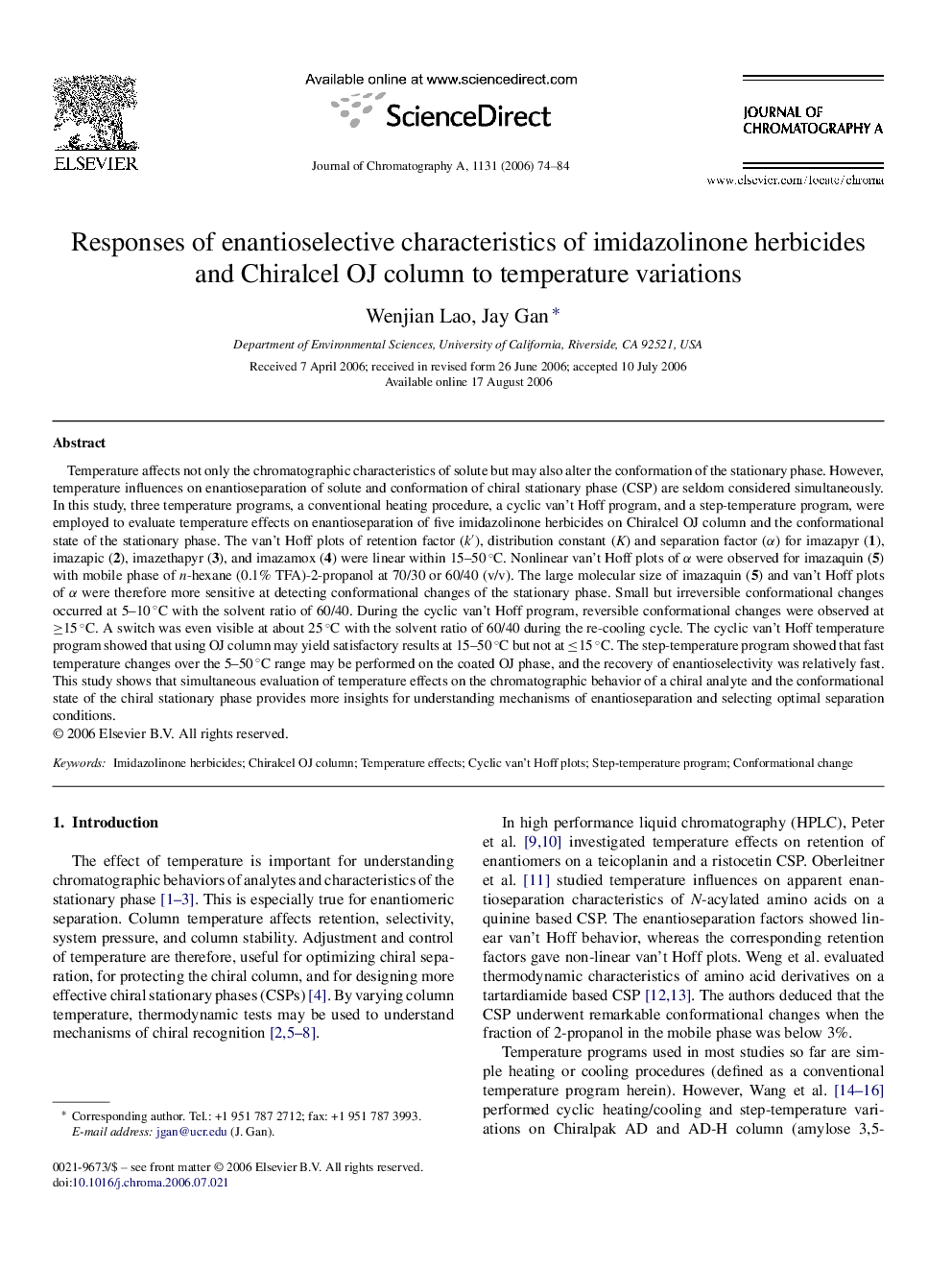| Article ID | Journal | Published Year | Pages | File Type |
|---|---|---|---|---|
| 1211348 | Journal of Chromatography A | 2006 | 11 Pages |
Temperature affects not only the chromatographic characteristics of solute but may also alter the conformation of the stationary phase. However, temperature influences on enantioseparation of solute and conformation of chiral stationary phase (CSP) are seldom considered simultaneously. In this study, three temperature programs, a conventional heating procedure, a cyclic van’t Hoff program, and a step-temperature program, were employed to evaluate temperature effects on enantioseparation of five imidazolinone herbicides on Chiralcel OJ column and the conformational state of the stationary phase. The van’t Hoff plots of retention factor (k′), distribution constant (K) and separation factor (α) for imazapyr (1), imazapic (2), imazethapyr (3), and imazamox (4) were linear within 15–50 °C. Nonlinear van’t Hoff plots of α were observed for imazaquin (5) with mobile phase of n-hexane (0.1% TFA)-2-propanol at 70/30 or 60/40 (v/v). The large molecular size of imazaquin (5) and van’t Hoff plots of α were therefore more sensitive at detecting conformational changes of the stationary phase. Small but irreversible conformational changes occurred at 5–10 °C with the solvent ratio of 60/40. During the cyclic van’t Hoff program, reversible conformational changes were observed at ≥15 °C. A switch was even visible at about 25 °C with the solvent ratio of 60/40 during the re-cooling cycle. The cyclic van’t Hoff temperature program showed that using OJ column may yield satisfactory results at 15–50 °C but not at ≤15 °C. The step-temperature program showed that fast temperature changes over the 5–50 °C range may be performed on the coated OJ phase, and the recovery of enantioselectivity was relatively fast. This study shows that simultaneous evaluation of temperature effects on the chromatographic behavior of a chiral analyte and the conformational state of the chiral stationary phase provides more insights for understanding mechanisms of enantioseparation and selecting optimal separation conditions.
